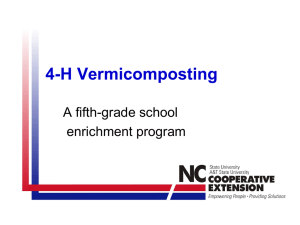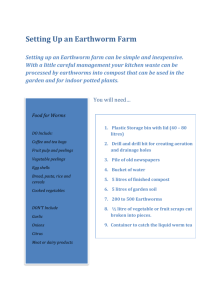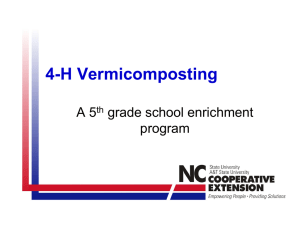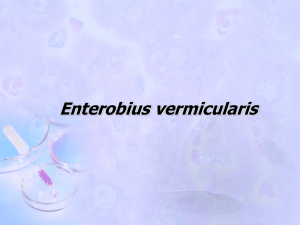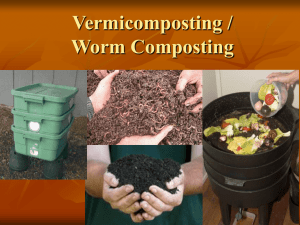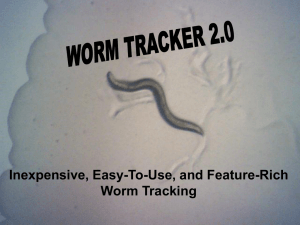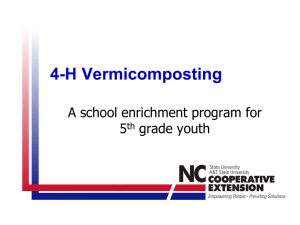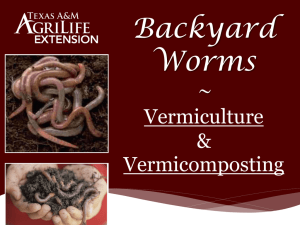Vermiculture PPT
advertisement
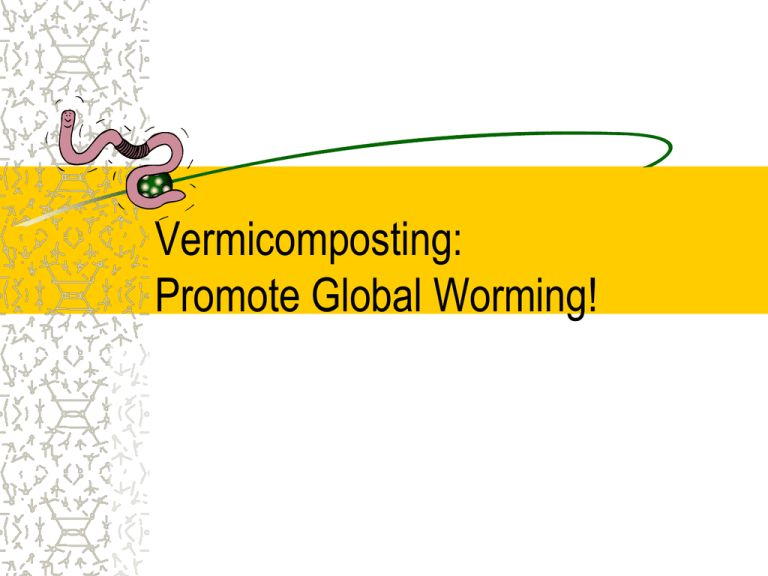
Vermicomposting: Promote Global Worming! Darwin Earthworms “The plow is one of the most ancient and most valuable of Man’s inventions; but long before he existed, the land … was regularly ploughed, and still continues to be ploughed, by earthworms. It may be (doubtful) whether there are many other animals which have played so important a part in the history of the world as these lowly, organized creatures. - Charles Darwin, 1881 Think about this: How can I change from “waste-ful” to being “waste-free”? Common Species Lumbricus terrestis – Night crawler Allolobophora caliginosa – Grey worm Allolobophora chlorotica – Green worm Lumbricus rubellus – Red worm Eisenia fetida – Red Wiggler Vermiculture & Vermicomposting Vermiculture is … “the culture of earthworms” Vermicomposting is … “using earthworms and microorganisms to convert organic waste into black, earthy-smelling, nutrientrich humus.” - Mary Appelhof Comparison of Composting Organic Matter Temperature – Compost bin = 130-160° F; 6-8 months – Worm bin = 59-70° F; year-round Air circulation – Compost bin = vents + turning – Worm bin = vents + worm churn st 1 E: Education Resources on the Internet: – Red Worm Composting • http://www.redwormcomposting.com/ – Worm Digest • http://www.wormdigest.org – City farmer • http://www.cityfarmer.org – Worm Woman (Mary Appelhof’s site) • http://www.wormwoman.com nd 2 E: Equipment Suppliers: – The Happy D Worm Ranch • http://www.happydranch.com – Biological Home Grown Farm • http://www.worm-publications.com/biologicalhome.htm – The Worm Farm • http://www.empnet.com/worms/welcome.htm Worm Bins Size Construction – Plastic vs. Wood construction – Commercial • Can-O-Worms™ • Worm-A-Way® • Worm-A-Roo™ Bin Construction Wooden Bin – – – – – – Organic Breathes Heavy Deteriorates faster Can be built as furniture No treated lumber or fragrant woods (ie: cedar) Plastic Bin – – – – Lightweight Holds moisture Will not rot Requires more holes for aeration – Inexpensive – Many bins available rd 3 E: Environment A worm bin must be: – – – – Convenient Easily accessible In a well-ventilated location Covered and protected from wind, sun, and animals Bedding Various materials: – – – – – – Shredded newspaper Sphagnum Peat Moss – Not Environmentally Friendly Manure Leaf litter Coir (Coconut fiber) Wood chips Dampen bedding with tap water Bin Care & Maintenance Provide adequate bin and bedding mixture Maintain moisture level Provide air circulation in bin via adequate holes – Provides aeration – Controls odors by eliminating anaerobic conditions Foodstock DO’s – – – – – – – – – – – Fruit & vegetable scraps Banana peels Grains & cereals, pasta Tea bags & leaves Cooked eggs & shells Coffee grounds & filters Onions & potatoes Pancakes Banana bread, cake Leaves Plant cuttings DON’Ts – Non-Biodegradables • Plastic • Glass • Rubber – Pet feces (cats) – Toxic materials • Ex: orange peels • Plant cuttings treated with herbicides or insecticides Other Organisms Mites & flies Predatory planarians Centipedes & millipedes Enchytraeids (white worms) Springtails Isopods (ie: sowbugs) Bacteria, mold, fungi, etc. Harvesting Vermicompost Worm castings vs. Vermicompost – Worm castings are deposits that have moved through the worm’s digestive system; – Vermicompost is a combination of : • • • • Worm castings OM and bedding at various stages of decomposition Organisms such as worms and cocoons Microorganisms Harvest Methods Dump & Hand Sort Method Lateral Method Vertical Method There is no such thing as waste, just misplaced resources. How can YOU be more waste-free?

